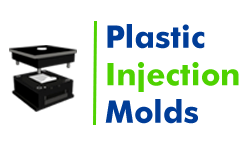- Mould Manufacturer
- Tooling
- Moulding Die
- Plastic Molding
- Plastic Injection Molding
- Injection Molding
- Nylon Injection Molding
- Injection Moulding
- Custom Injection Molding
- Injection Mould
- Injection Mouldings Process Manufacturers
- Medical Injection Molding
- Polycarbonate Injection Moulding
- Rapid Injection Moulding
- Injection Molds
- Injection Molding Cost
- Injection Molding Suppliers
- Injection Moldings
- HDPE Molding
- Metal Injection Molding
- Rubber Injection Molding
- Mold Designing
- Prototyping
- Automotive Injection Molding
- Blow Molding
- 3D Printing
Adopt to the New 3d molding Technology for Better Production Efficiency
A few days back, injection moulding has been the talk-of-the-town. Technology is evolving, and the demands of the customers are on the rise too. 3d molding is gaining popularity quickly as people are already aware of the 3-D printing technology.
Most of the business owners in the plastic industry already use the technology where you have to inject molten plastic within a mold cavity and allow it to harden after cooling. On opening the mold, you get the plastic piece.
Mass production through 3d prototyping
To meet the continuously rising demands in the market, you have to accelerate the production rate. Acceleration is possible only if you are ready to try the 3d prototyping method. Can you think of any solution without adding it to the expense list?
- Rapid prototyping always integrates 3D printing, but there is much more to the process. The process means iterating a design quickly with the fast production of the physical prototypes and making the necessary changes at each step to improve the product.
- Even sophisticated techniques like injection molding will require at least a week and sometimes months to manufacture individual iterations.
- Injection molding will also call for extra expenses if you compare it to the expenses in 3D printing or laser cutting techniques.
Digital fabrication has now made it possible to produce 3d prototypes in a short time sing the myriad materials with different properties like cheap PLA, durable nylon, impact-resistant ABS, and more.
The process
Utilizing the 3D printing injection moulds for production is more viable at this stage.
- The moulders will use CAD software like AutoCAD or Fusion 360 for the injection mould design.
- The 3d prototype design will be present in the digital system as an STL file, or the engineers will slice it into G-code.
- Now, mold printing will start, layer by layer, using a 3D printer.
- The mold will fit into a metallic frame, and it will be ready for 3d prototyping service through injection moulding.
Utilize the 3d mold design
One of the most common applications of the 3d mould design is making prototypes to create relatively low-to-medium priced objects. 3D printing is undoubtedly the additive manufacturing method where you can impart the right shape to the prototype within a short time. Dependingo the level of accuracy you need, you can apply the right technique for the job.
Perfection of design
One thing that the manufacturers can never deny is the perfection in the shape and form of the products, particularly when you apply the 3d mold design. As the design depends on 3D printing technology, it can understand the concept of the container properly. Once you get that, your half job is over, for customers need perfection in your work.
Speed of production
Applying the 3D printing technology in the making of molds has been a boon as it will give you the power to design, manufacture, and test the products within the shortest possible time. The process of rapid 3d prototyping has opened up a huge opportunity for all the industrialists to boost production without hiring additional labor or increasing shift timing.
It is essential to adopt the 3d rapid prototyping service as it will open up a huge arena for boosting production. It is a cost-effective process that will help in generating more revenue
Affordable and Rapid Prototyping: Harnessing the Power of Cheap 3D Printing and 3D Prototype Injection Molding
Accessible Innovation with Cheap 3D Printing Services`
Innovation and prototyping have become more accessible than ever, thanks to the emergence of cheap 3D printing service. These services provide an affordable avenue for businesses of all sizes to bring their ideas to life through cost-effective 3D printing technology. With affordable pricing structures, companies can leverage cheap 3D printing services to explore new designs, create prototypes, and iterate rapidly without breaking the bank.
Affordable 3D Printing Services: Quality and Value Combined
While affordability is a key factor, it doesn't mean compromising on quality. Affordable 3D printing services prioritize both quality and value, utilizing advanced printers and materials to deliver high-quality prints that accurately represent the intended designs. These services ensure that the prototypes maintain precision, detail, and functionality, enabling businesses to make informed decisions during the product development phase. By leveraging affordable 3D printing services, companies can achieve reliable and realistic prototypes at a fraction of the cost.
Rapid Prototyping with 3D Prototype Injection Molding
The integration of 3D printing and injection molding has given rise to 3D prototype injection molding, a game-changing approach to rapid prototyping. By using 3D printed molds, this method allows for the production of low-volume prototypes that closely resemble final production parts. The cost-effectiveness and speed of 3d prototype injection molding enable businesses to quickly validate designs, test functionality, and gather feedback without the expense and time commitment of traditional injection molding. This process accelerates the product development cycle, reduces time-to-market, and provides invaluable insights for design optimization.
Driving Innovation on a Budget
The combination of cheap 3D printing services and 3D prototype injection molding empowers businesses to drive innovation even with limited budgets. Affordable 3D printing services offer a cost-effective solution for iterative prototyping, allowing companies to explore multiple design variations and refine their concepts without excessive expenditure.
The affordability and accessibility of cheap 3D printing services, along with the rapid prototyping capabilities of 3D prototype injection molding, have transformed the landscape of innovation and product development. These cost-effective technologies allow businesses to prototype and iterate rapidly, test designs, and make informed decisions without significant financial investment. By harnessing the power of affordable 3D printing services and embracing 3D prototype injection molding, companies can drive innovation, reduce costs, and bring their ideas to life in an efficient and cost-effective manner.
FAQ
- Q1. What Are 5 Benefits Of 3D Printing?
Here are 5 benefits of 3D printing:
- Customization: 3D printing allows for tailored objects to individual needs, notably in healthcare.
- Rapid Prototyping: Accelerates design iterations, reducing time and costs.
- Cost-Effective Production: Eliminates costly tooling, making small-scale manufacturing economically viable.
- Complex Geometry: Enables intricate designs and structures previously impractical to manufacture.
- Sustainable Manufacturing: Minimizes waste and supports on-demand production, reducing environmental impact.
- Q2. What Are 2 Limitations Of 3D Printing?
The 2 limitations of 3D printing are:
- Material Limitations: While 3D printing offers a wide range of materials, some applications require specific properties not yet achievable with current materials, such as extreme temperature resistance or flexibility.
- Post-Processing Requirements: Finished prints often require additional post-processing steps like sanding or painting for smoother surfaces or desired aesthetics, adding time and labor costs.
- Q3. Is It Expensive To 3D Print?
A number of variables, including material, size, complexity, and quality, affect the price of 3D printing. While entry-level desktop printers can be purchased for several hundred dollars, industrial-grade equipment and supplies can be rather expensive. Furthermore, the expenditures associated with post-processing and upkeep adds up, making 3D printing a reasonably priced option.
- Q4. What Are The Two Main Types Of 3D Printing?
Stereolithography (SLA) and Fused Deposition Modeling (FDM) are the two primary forms of 3D printing. Layer by layer, thermoplastic materials are melted and extruded in FDM, whereas liquid resin is solidified layer by layer in SLA by means of a UV laser. Both techniques may produce sophisticated 3D things with different degrees of intricacy and detail.







.webp)

